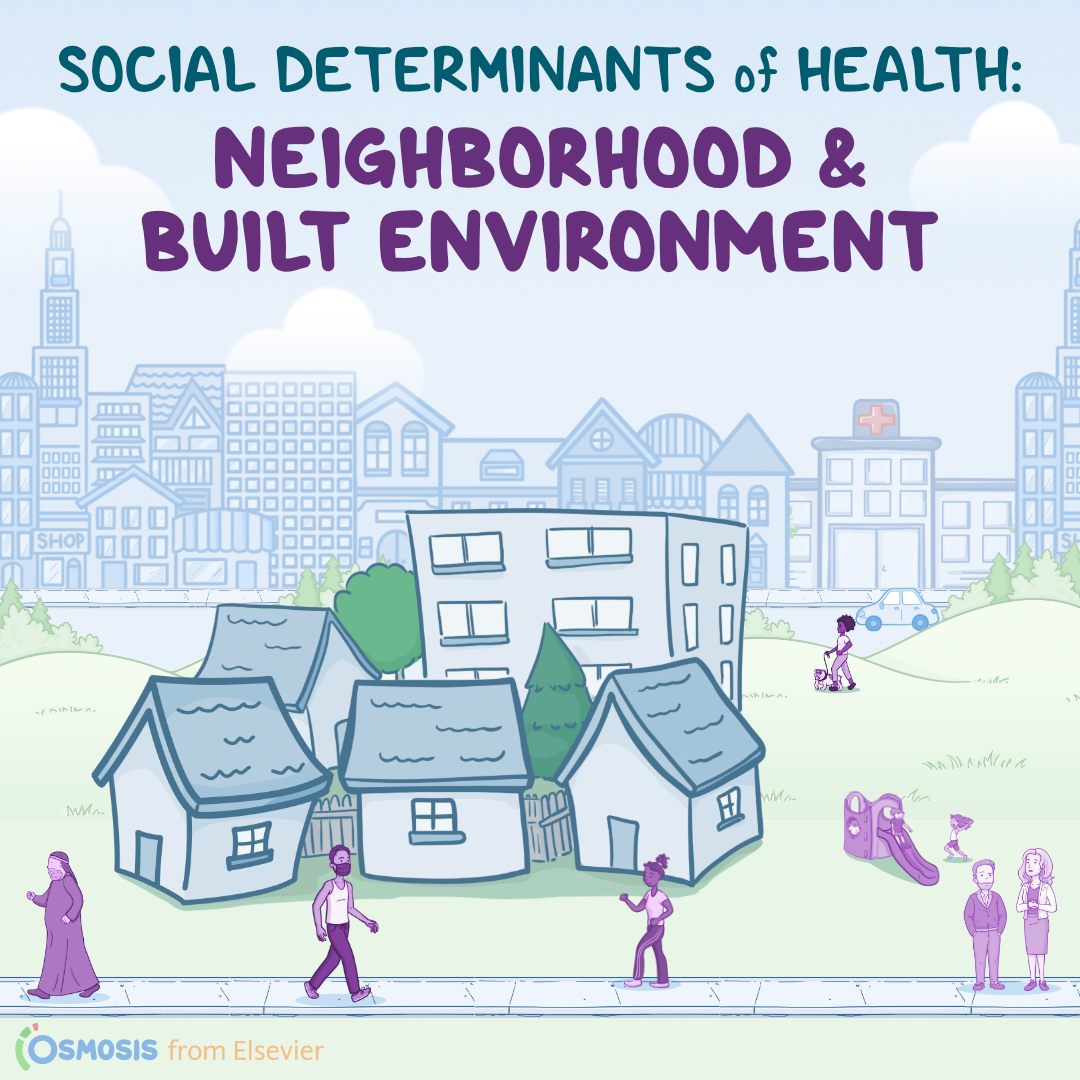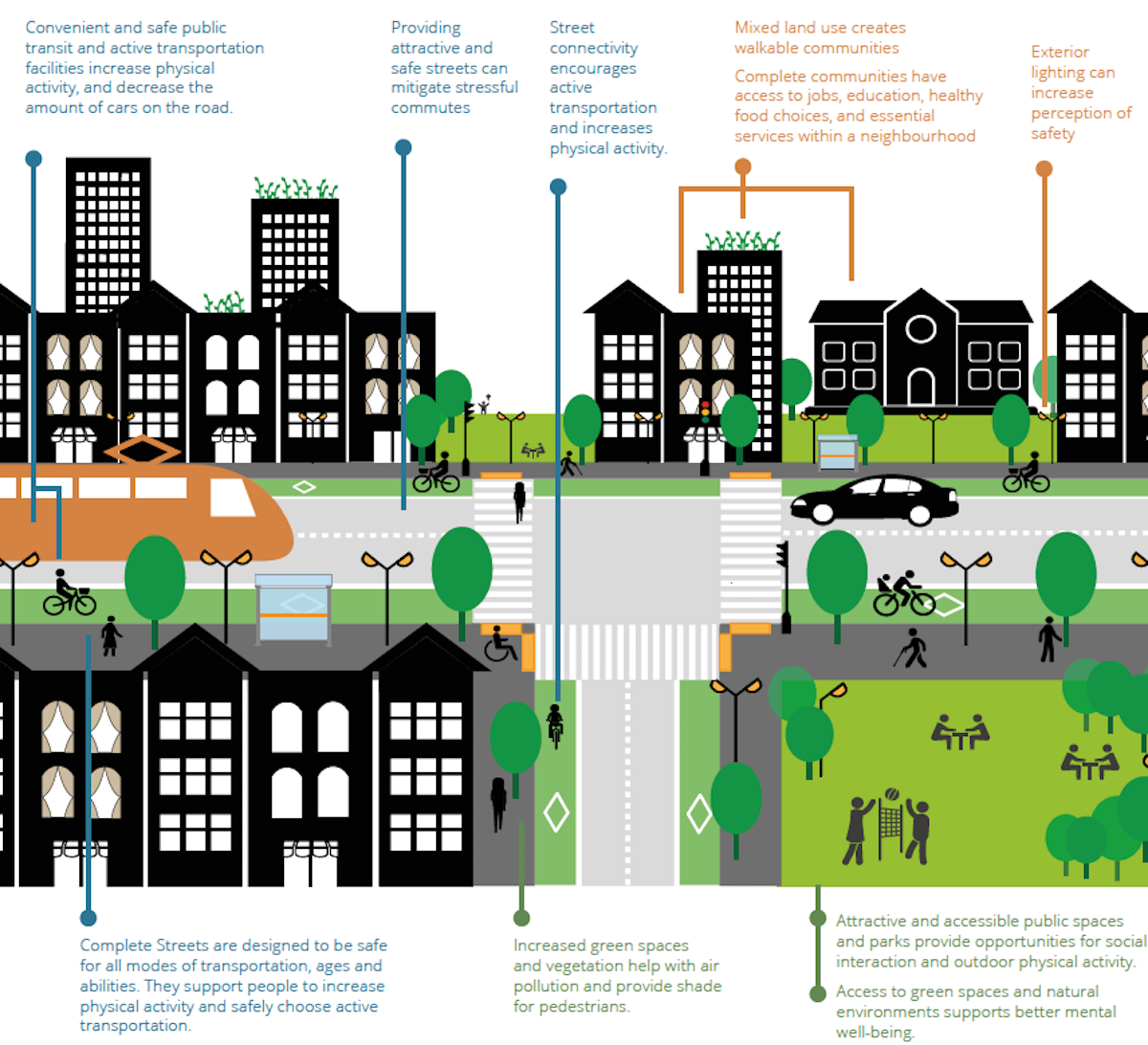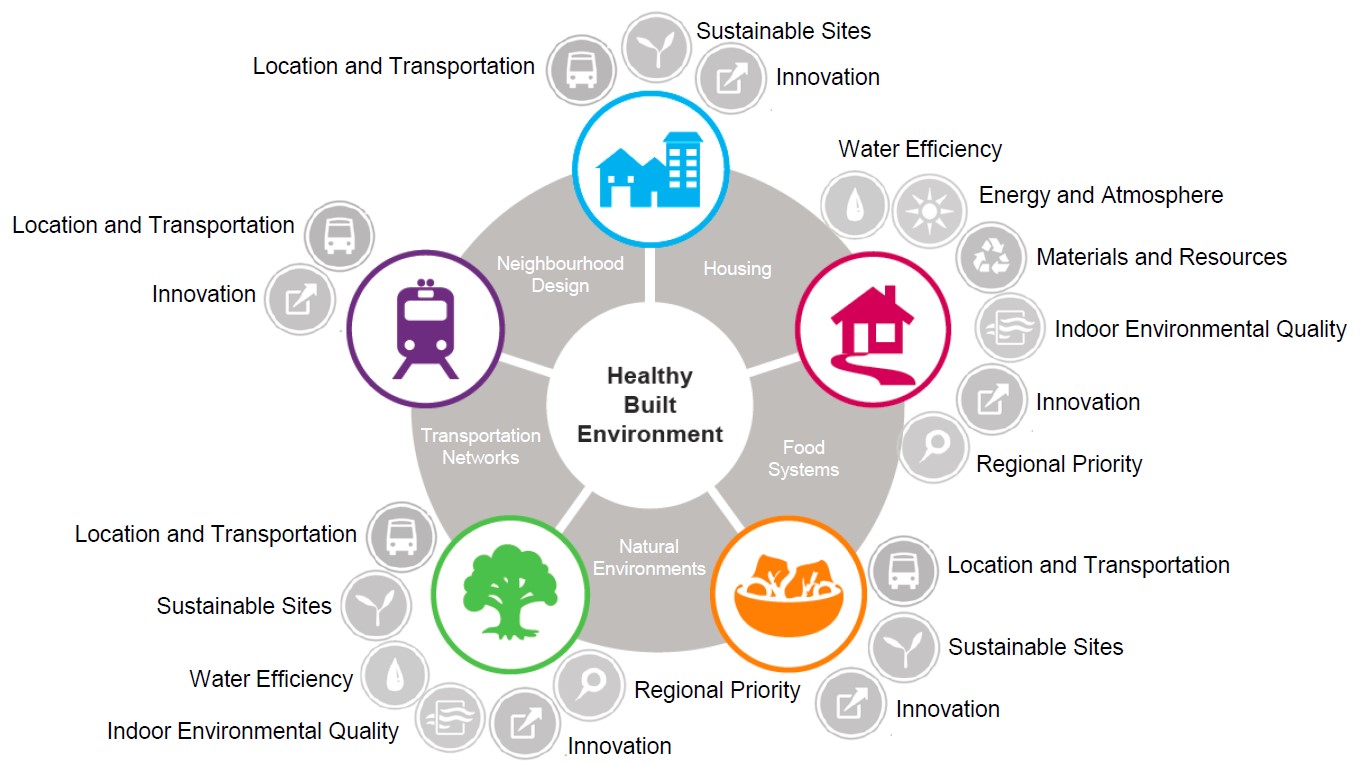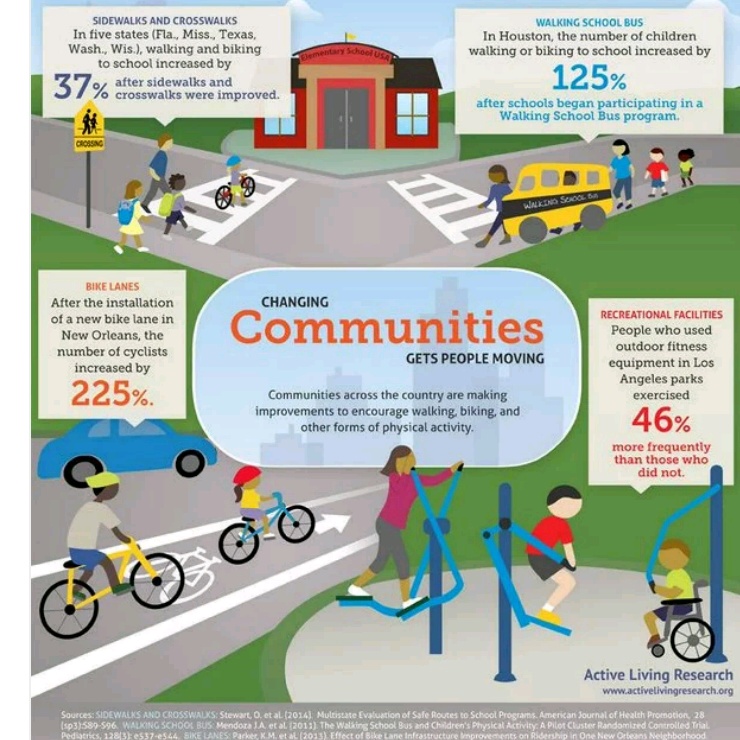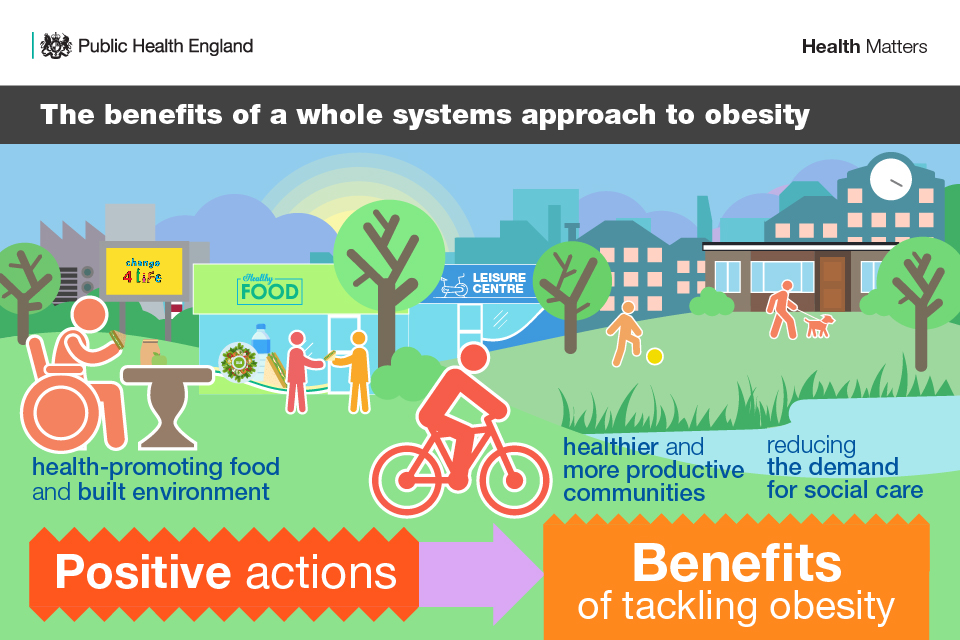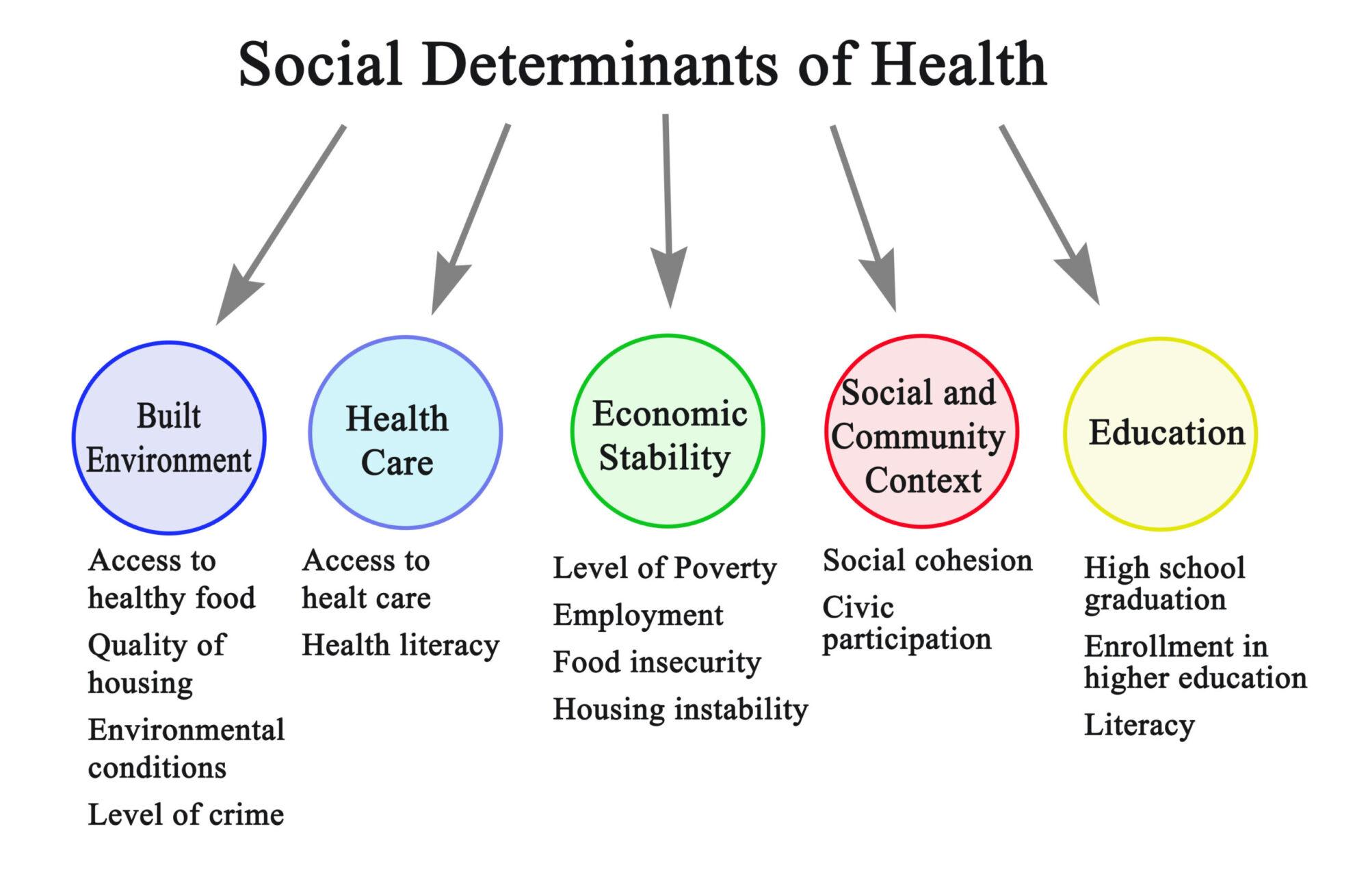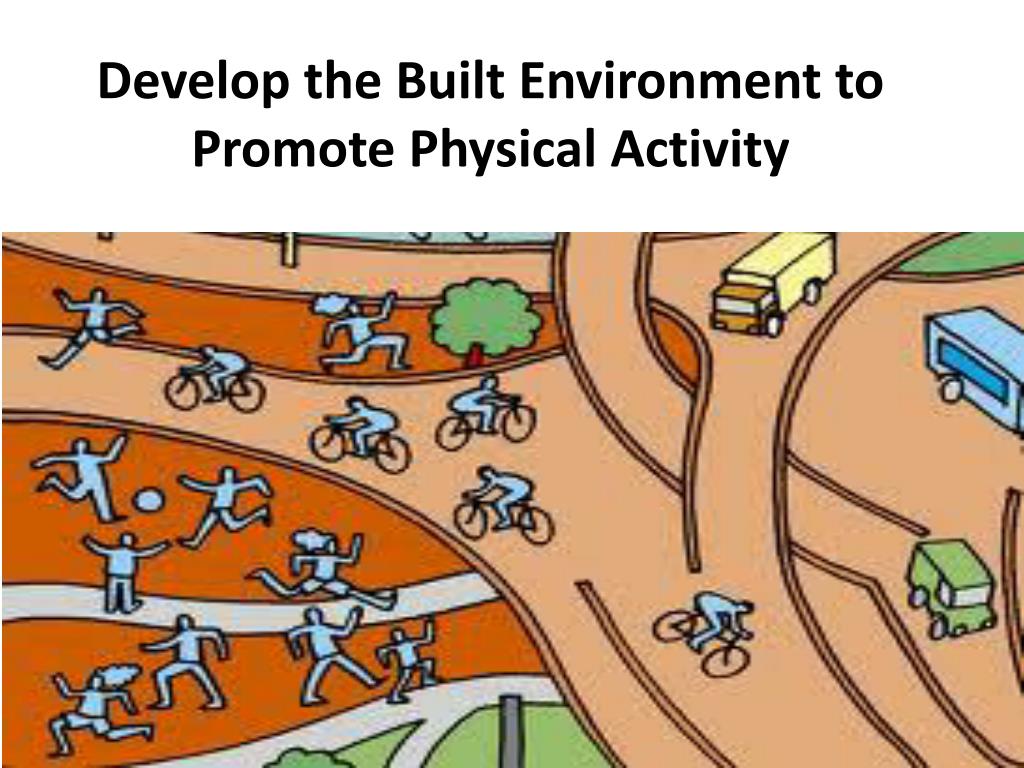How Can The Built Environment Encourage Healthy Lifestyles

Across the globe, urban planners, architects, and public health officials are increasingly recognizing the profound influence of the built environment on individual and community health. From sprawling suburban developments to dense city centers, the design and structure of our surroundings can significantly impact physical activity levels, access to healthy food, social interaction, and overall well-being.
This growing awareness has sparked a movement toward creating healthier communities through thoughtful urban design, prioritizing features that promote active living and equitable access to resources. The shift aims to combat rising rates of chronic diseases linked to sedentary lifestyles and unhealthy diets, issues that disproportionately affect vulnerable populations.
The Interconnectedness of Design and Health
At the heart of this movement is the understanding that the built environment isn't just about aesthetics; it's about shaping human behavior. The WHO (World Health Organization) emphasizes that healthy urban planning involves creating environments that support and encourage healthy choices.
This includes designing walkable and bikeable streets, providing access to parks and green spaces, and promoting the availability of healthy food options in local neighborhoods.
Walkability and Active Transportation
One of the most critical aspects of a health-promoting built environment is walkability. Communities designed with pedestrian-friendly infrastructure encourage residents to incorporate physical activity into their daily routines.
Sidewalks, crosswalks, traffic calming measures, and pedestrian-oriented street lighting are essential elements. The CDC (Centers for Disease Control and Prevention) reports that people living in walkable neighborhoods tend to be more physically active and less likely to be obese.
Beyond walkability, prioritizing cycling infrastructure, such as bike lanes and secure bike parking, can further promote active transportation. Many cities are investing in bike-sharing programs to make cycling more accessible to residents.
Green Spaces and Mental Well-being
Access to parks, gardens, and other green spaces is crucial for both physical and mental health. Studies have shown that spending time in nature can reduce stress, improve mood, and enhance cognitive function.
Urban parks provide opportunities for physical activity, social interaction, and relaxation. Designing parks that are accessible to all residents, regardless of age or ability, is essential for promoting health equity.
Furthermore, incorporating green infrastructure into urban design, such as green roofs and walls, can help improve air quality and reduce the urban heat island effect.
Access to Healthy Food
The availability of healthy and affordable food options is another key determinant of community health. "Food deserts," areas with limited access to supermarkets and fresh produce, can contribute to poor dietary habits and increased risk of chronic diseases.
Zoning policies that encourage the development of grocery stores, farmers markets, and community gardens in underserved neighborhoods can help address this issue. Supporting local food systems and promoting healthy food retail initiatives are also important strategies.
"The design of our communities plays a significant role in shaping our health behaviors," says Dr. Emily Carter, a public health researcher specializing in urban planning.
Promoting Social Connection
The built environment can also influence social interaction and community cohesion. Public spaces designed to encourage social interaction, such as plazas, community centers, and shared gardens, can help foster a sense of belonging and reduce social isolation.
Mixed-use developments that combine residential, commercial, and recreational spaces can create vibrant, walkable neighborhoods where residents can easily connect with one another. Thoughtful design can also promote intergenerational interaction, for example by locating playgrounds near senior centers.
Challenges and Future Directions
Despite the growing recognition of the importance of healthy built environments, several challenges remain. Retrofitting existing communities to incorporate health-promoting features can be costly and complex.
Addressing inequities in access to healthy environments is also a critical priority. Low-income communities and communities of color often bear the brunt of unhealthy urban development patterns.
Moving forward, collaboration between urban planners, public health officials, and community members is essential for creating truly healthy and equitable communities. This includes engaging residents in the planning process and ensuring that their voices are heard.
Integrating health considerations into all aspects of urban planning and development can help create a future where the built environment actively supports the well-being of all residents. The concept of Health Impact Assessments (HIAs) are becoming increasingly common to project potential effects of a planning proposal on the health of a population.
By prioritizing healthy design, we can create communities that promote active living, healthy eating, social connection, and overall well-being, leading to healthier and more vibrant societies.
